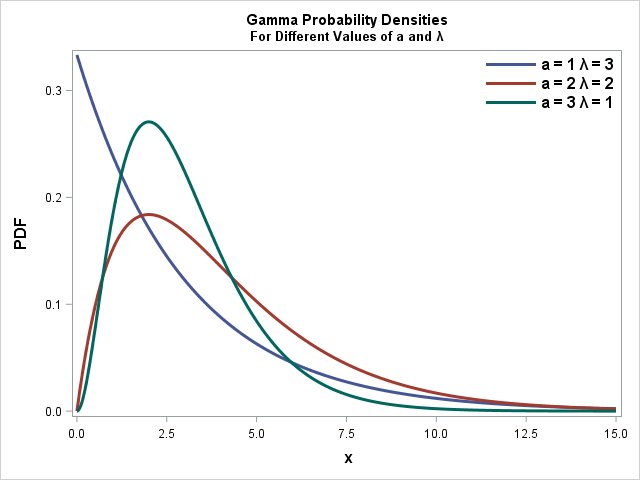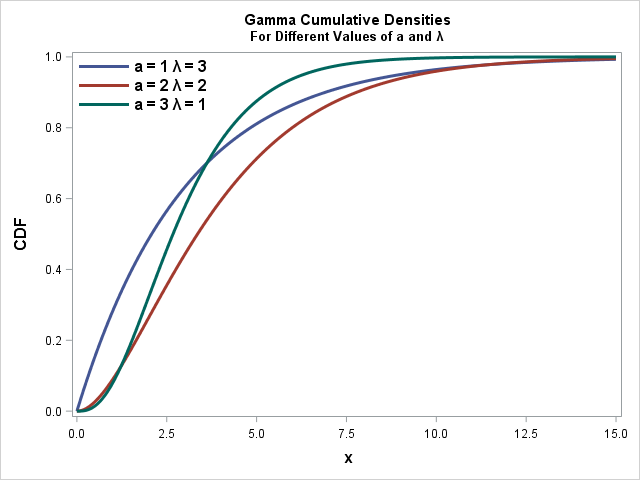![]()
![]()
Here ![]()
![]()
To the right, I have plotted densities and their corresponding cumulative Densities for three different Gamma distributions with different shape and scale parameters. You can download the program creating the plots here and insert into your own editor.
The Exponential Distribution is a special case of the Gamma distribution with shape parameter ![]()
![]()
![]()
![]()
![]()
![]()
Another special case of the Gamma distribution is the Chi-Squared Distribution with shape parameter ![]()
![]()
![]()
![]()
![]()
![]()
![]()
![]()
![]()
![]()
Finally, I have previously written about how to Fit Continuous Distributions in SAS. Here, I write about fitting the Normal, Weibull and Lognormal distribution to univariate data. Needless to say, this method is also applicable for the Gamma distribution.




SAS Code Gamma Example
Below, I have written a small SAS program that lets you set the shape parameter ![]()
![]()
![]()
![]()
![]()
![]()
![]()
%let a=2; %let lambda=2; data PDF; do x=0 to 15 by 0.01; pdf=pdf('Gamma', x, &a, &lambda); output; end; run; title "Gamma Probability Densities."; title2 "For Different Values of a=&a and (*ESC*){unicode lambda}=&lambda."; proc sgplot data = PDF noautolegend; series x=x y=pdf/ lineattrs=(thickness=3) legendlabel="a = 1 (*ESC*){unicode lambda} = 3"; yaxis label="PDF" labelattrs=(size=12 weight=Bold); xaxis label='x' labelattrs=(size=12 weight=Bold); run; title; |
